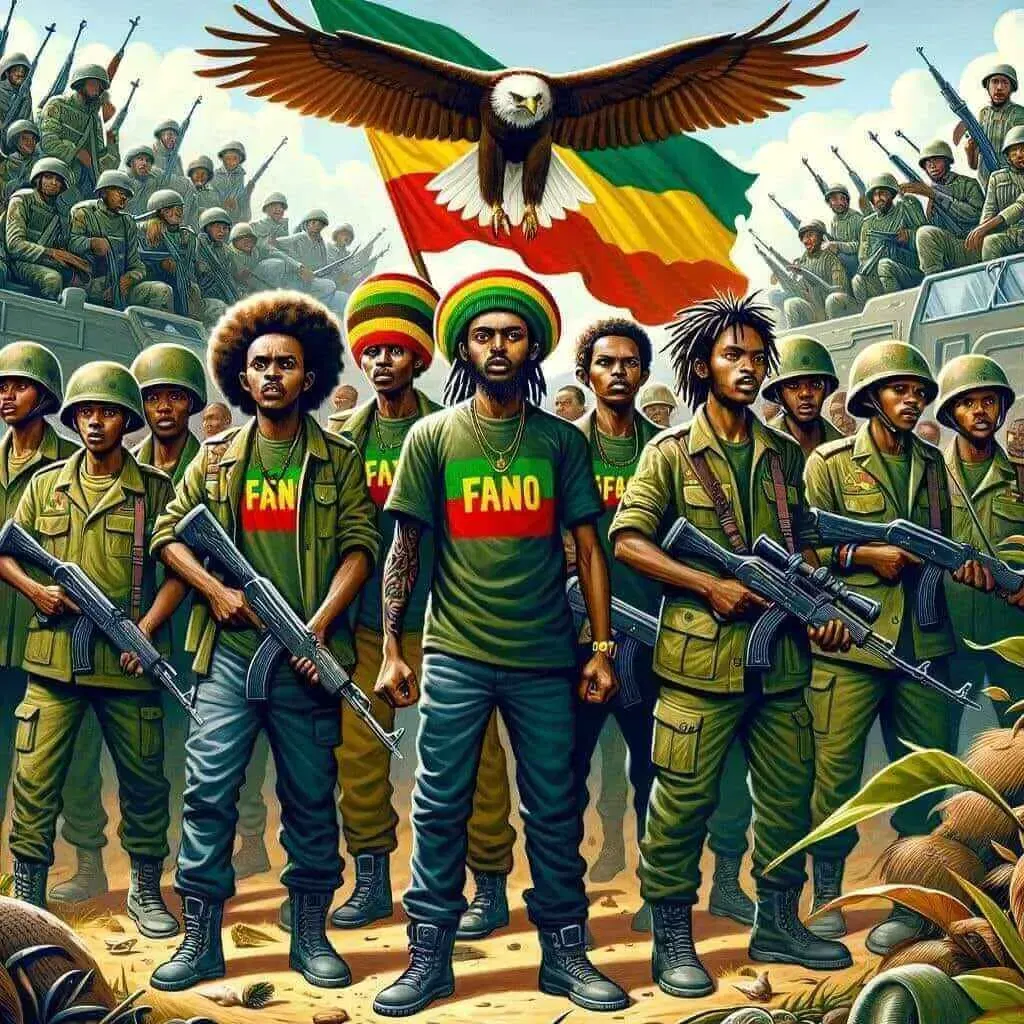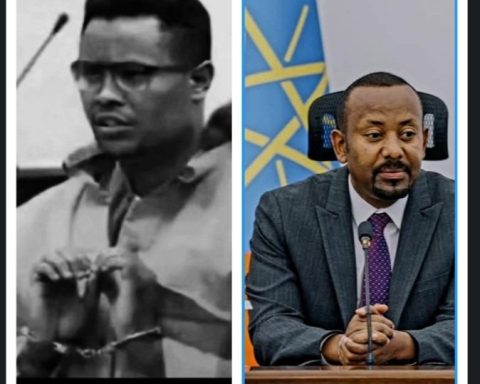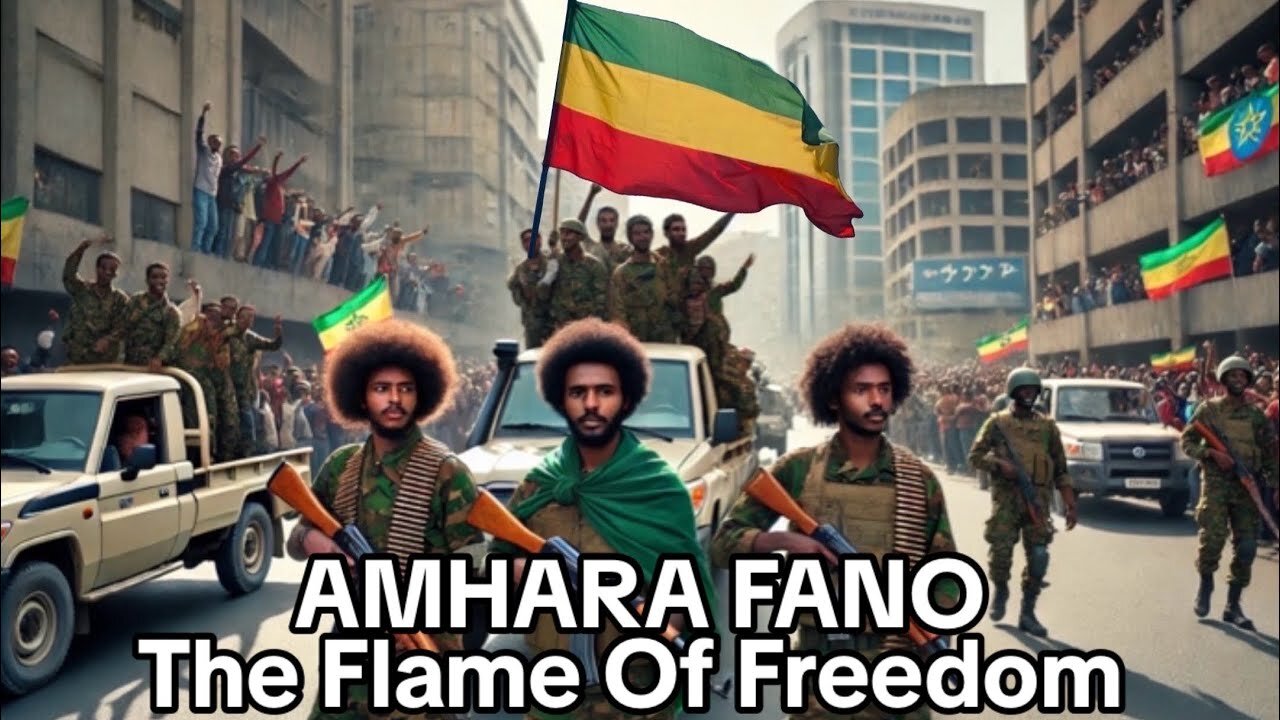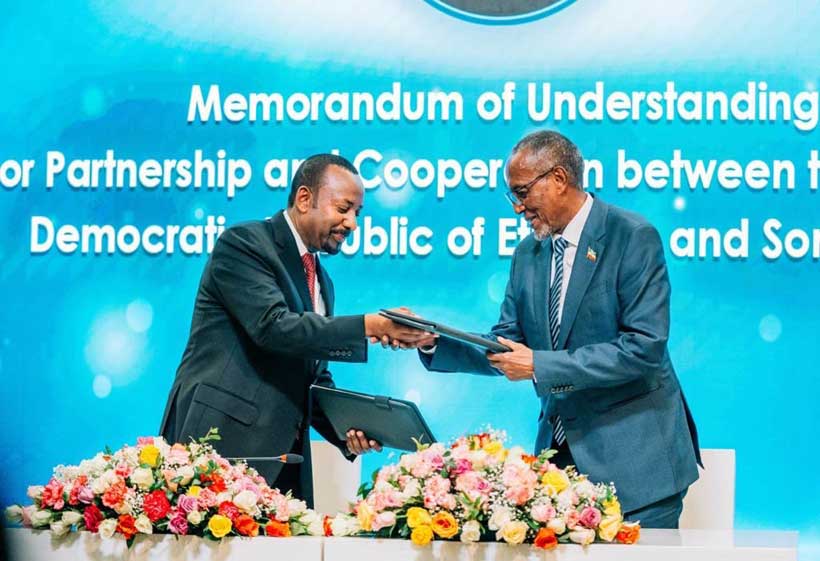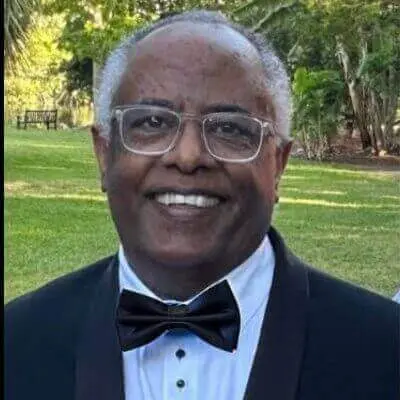The Amhara region is currently undergoing a significant transformation, as its inhabitants navigate through a myriad of challenges and aspirations. The local farmer’s sentiment reflects a sense of uncertainty, indicating a deep connection to the land, yet an awareness of the complexities that surround it. As the community grapples with the implications of the Oromo movement, a palpable tension emerges regarding the future of Ethiopia and the Amhara people. 2.
The ongoing struggles within the region appear to be intensifying, with individuals reflecting on their own circumstances and the broader societal dynamics at play. The Amhara people seem to be caught in a state of vigilance, as they await the outcomes of these developments, which may have lasting effects on their identity and existence.
The urgency of the situation is underscored by the need for clarity and resolution, as the community seeks to define its path forward amidst the evolving political landscape. The community’s resilience and determination will be crucial in shaping the future, as they navigate the complexities and uncertainties that lie ahead.
Amhara and Oromo, two significant communities in Ethiopia, are currently in a state of flux, contending with a spectrum of challenges and uncertainties. The scenario paints a picture of both struggle and aspirations, with the local farmer as an emblem of resilience. As Amhara navigates cultural complexities and the implications of the Oromo movement, tensions simmer regarding Ethiopia’s future and the intrinsic identity of these people. Similarly, the Oromo community experiences its dynamic evolution, mobilizing resources and advocating for its best interests amid political actions. The unfolding narrative underscores the palpable need for resolution and strategic decisiveness, as both communities dwindle on the precipice of change that could redefine their national identity and existence. The essence of this article: exploring these powerful dynamics and the strategic approaches crucial to defining the path forward in the constantly shifting political landscape.
Challenges Facing the Amhara Region
In the heart of Ethiopia, the Amhara region is witnessing a change as its inhabitants are facing an array of challenges and aspirations. The strategic position of this region combined with its diversified industrial base, potential agricultural resources, and historical significance poses complex challenges that need comprehensive analysis.
Local Farmers and Connection to the Land
Amhara, inhabited primarily by farming communities, encompasses a deep-rooted bond between its dwellers and the land they derive their living from. In the unfolding context, two pivotal factors need our attention.
Sentiments of Uncertainty
Amhara farmers express a heightened sense of uncertainty. This sentiment predominantly stems from the feeling of being caught between their connection to the land and understanding the broad complexities surrounding their fate. They are aware that the land they hold dear is entangled in a web of geopolitical and socio-economic factors beyond their immediate control.
Complexities Surrounding Agriculture
Agriculture, the mainstay of the Amhara community, is being affected by numerous interlinked complexities. Resource management, landownership disputes, and climate change are all contributing to deepening the uncertainties. It is evident that a multi-dimensional approach that considers the farmers’ interests and concerns is required to attend these complexities.
Impact of the Oromo Movement
The evolution of the Oromo movement is exerting a profound influence that is reverberating throughout the region and causing rippling effects on the Amhara community.
Community Tensions
As the community grapples with the ramifications of the Oromo movement, a palpable undercurrent of tension is unavoidable. How this tension will shape the future of Ethiopia and Amhara is an open-ended question, currently posing a challenge in itself.
Implications for Amhara’s Future
In an already tense environment, the future of Ethiopia and Amhara remains hinged on the unfolding circumstances. The Amhara people appear to harbor a sense of vigilance as they wait for the outcomes of these scenarios.
Struggles and Societal Dynamics
While narratives of struggle permeate the lives of the communities, it is pertinent to situate these within broader societal dynamics that could shape the outcomes.
Vigilance and Identity Concerns
The Amhara people, with their distinct cultural and ethnic identity, are keen on protecting their existence amidst the prevailing uncertainties. Their vigilance, while essential for their survival, is also presenting a significant challenge as they seek to anticipate and adapt to emerging realities.
Need for Clarity and Resolution
With heightened uncertainties looming large, there is an increasing desire and urgency for clarity and resolution. This is not only true for societal nuances but also critical for shaping the path forward. Evolving political landscapes further underscore this need, making this one of the formidable challenges the Amhara region faces today.
Military Assistance and Resource Mobilization
Utilization of Amhara Military Resources
Recognizing the importance of military strength, the Oromo community seeks military assistance to meet potential defense needs. They have strategized to use the military resources within the Amhara region, thus creating favorable conditions for the Oromo initiatives in national security.
Strengthening Defense Capabilities
To effectively respond to potential threats and challenges, the Oromo community places great importance on strengthening its defense capabilities. The community exhibits a readiness to muster resources from diverse regions to bolster their efforts, especially during challenging times.
Maintaining Integrity of National Defense
Organizing and Equipping Forces
Maintaining the integrity of the national defense force is pivotal to ensure a secure future for the Oromo community. Steps have been taken to ensure the military capabilities are adequately equipped, prepared, and well-organized to respond to any threats.
In line with maintaining the national defense’s integrity, the community is keen to design and implement strategies to enable an effective response to threats. This unwavering focus on meeting adversities head-on is a testament to the resilience of the Oromo community.
On the whole, the Oromo community continues to advance amid complexities, bolstering its position within Ethiopia while persistently advocating for its interests and identity. Their strategic navigation through socio-political and security dynamics exemplifies the community’s foresight and tenacity.
These consist of the strategic decisions and tactical responses that both the Oromo and Amhara communities may need to consider in their ongoing journey amid the political unrest.
Under this segment, we will take a detailed look into the management and command of the National Defense Forces and the implications it could have. In the near future, moving forward, the Amhara region will be under the command of the national defense forces of Ethiopia, which will help to realize initial objectives. This has the potential to create a more unified and coordinated response to any insecurity that may arise, employing the vast military resources available in the Amhara region.
Realizing Initial Objectives
Realizing these objectives requires proper planning and efficient implementation. However, overcoming the challenges posed by the dynamic socio-political environment requires tactical brilliance and strategic thinking from the Amhara community. This includes ensuring the military capabilities are adequately equipped and prepared to handle any threats.
Statistical Analysis of Ethnic Populations
Understanding the ethnic distributions and their influence on the socio-political landscape is critical in forming any strategic decision.
Influence of TPLF on Amhara Population
Statistics indicate that the Amhara population, as influenced by the TPLF, is positioned at a secondary level. Handling this influence requires a thorough understanding of its implications and devising strategies that promote the interests of the Amhara people.
Position of Smaller Ethnic Groups
According to the current demographics, the numbers for smaller ethnic groups such as Somali, Sidama, and Tigray could be even lower. Understanding the position of these smaller ethnic groups and their dynamics could provide significant insights in developing inclusive strategies.
Coordinated Efforts and Continued Struggles
This element highlights the joint efforts of these communities and their resilience in the face of these struggles.
Articulating Objectives and Strategies
It’s imperative that the objectives and strategies are effectively articulated and coordinated under the command of the national defense forces. This articulation aids not just in clarity, but also in creating strategies that serve the interests of both parties involved.
Effective Coordination with Defense Forces
Moreover, maintaining effective coordination with defense forces plays a crucial role in managing these challenges. This coordination, coupled with vigilance from the community, can lead to the timely resolution of these struggles, leading to a more secure and peaceful future.
The government led by Abiy Ahmed has been accused of detaining thousands of Amhara individuals based on their ethnic identity. This situation has raised significant concerns regarding human rights and the treatment of various ethnic groups within the country.
Numerous reports have emerged detailing the circumstances surrounding these arrests, highlighting the broader implications for social cohesion and stability in the region. The actions taken by the Orommuma government have sparked widespread criticism and calls for accountability regarding the treatment of the Amhara people.
The individuals from the Amhara region are presently detained at Qilinto prison.
1. Hon. Mr. Yohanes Boyalew
2. Hon. Mr. Christian Tadele
3. Hon. Dr. Kassa Teshager
4. Dr. Wondewosen Asefa
5. Dr. Tewodros H/mariam
6. Dr. Meseret Kelemework
7. Dr. Sisay Awgichew
8. Dr. Mearegu Biyabeyen
9. Dr. Chane Kebede
10. Dr. Zerihun Baheriw
11. Dr. Gibreab Alemu
12. Mr. Alelegn Mihretu
13. Mrs. Meskerem Abera (Journalist)
14. Mr. Gobeze Sisay (Journalist)
15. Mr. Dawit Begashaw (Journalist)
16. Miss. Genet Asemamaw (Journalist)
17. Mr. Abay Zewdu (Journalist)
18. Mr. Tesfay Mekuriaw
19. Mr. Tadesse Wodaynew
20. Artist. Yordanos Aleme
21. Mr. Menber Alemu
22. Mr. Sisay Melkamu
23. Mr. Biset Terefe
24. Mr. Dawit Ebabu
25. Mr. Masresha Eneyew
26. Mr. Tewodros Teshome
27. Mr. Andebet Teshager
28. Mr. Abreham Getnet
29. Mr. Molalegn Sisay
30. Mr. Habtamu Dagne
31. Mr. Chane Zeyede
32. Mr. Samuel Beze
33. Miss. Halima Mohamed
34. Mr. Ashagre Melese
35. Mr. Dagne Abebe
36. Mr. Tilaye Yitayew
37. Er. Firdu Tafere
38. Er. Tizazu Yitbarek
39. Saj. Gorefe Wotate
40. Mr. Belay Adamu
41. Mr. Mulugeta Agzew
42. Mr. Kefale Esubalew
43. Mr. Amare Melese
44. Mr. Tewodros Nibret
45. Mr. Tadele Asefa
46. Mr. Wotetu Desalegn
47. Mr. Desalegn Ejigu
48. Mr. Admasu Alemu
49. Mr. Shibeshi Mekonnen
50. Mr. Tewodros Tamiran
51. Mr. Birehanu Tewelegn
52. Mr. Tariku Tadesse
53. Mr. Desale Alemu
54. Mr. Habtamu Fekadu
55. Mr. Eyob Tamiru
56. Mr. Fetalew Ademasu
57. Mr. Mekonnen Desalegn
58. Mr. Getenet Amare
59. Mr. Dejen G/tsadik
60. Mr. Gizachew Tamiru
61. Mr. Fentahun Fikadu
62. Mr. Wondemu Berehe
63. Mr. Abdurehman Ahmedin
64. E/r. Yeshiwas Aletaseb
65. Saj. Altasb Dinku
66. Mr. Samson Mamo
67. Mr. Desalegn Wubu
68. Mr. Habtamu Teshager
69. Mr. Meleku Tesfe
70. Mr. Asemamaw Arega
71. Mr. Misganaw Abatneh
72. Mr. Hussien Seid
73. Mr. Micheal Melak (Human Right Defender & Journalist)
74. Mr. Brehanu Sileshi
75. Mr. Eskender Shiferaw
76. Miss. Hiwot Alemayehu
77. Mr. Aron Tirefe
78. Mr. Haile Tadesse
79. Mr. Bisrat Kassaye
80. Mr. Solomon Fikadu
81. Mr. Amanuel Yalew
82. Mr. Samuel Yalew
83. Mr. Brehanu Manave
84. Mr. Habtamu Anda
85. Mr. Bantayehu Ayalew
86. Mr. Tesfaye Birku
87. Mr. Ashenafi Yihune
88. Mr. G/mariam Setegn
89. Mr. Meseret Worku
90. Mr. Melake Misale
91. Mr. Aweke Sineshaw
92. Mr. Gete Amenu
93. E/r. Dawit Yifru
94. Mr. Alembulutena H/micheal
95. Mr. Fekadu Mengiste
96. Mr. Manaye Ayele
97. Mr. Yilem Bezabih
98. Mr. Abreham Ayana
99. Mr. Zena Hailu
100. Mr. Andualem Ashagre
101. Mr. Wubet Akale
102. Mr. Ermiyas Mekuria
103. Mr. Zenebe Shita
104. Mr. Amanuel Haile
105. Mr. Hassen Mohamed
106. Mr. Abdulkader Mohammed
107. Mr. Wogene Sirak
108. Mr. Endashaw Mandefro
109. Mr. Muluneh Ayetenfesu
110. Mr. Melayekt Amare
111. Mr. Chernet. Zemene
112. Mr. Yilake Gedamu
113. Mr. Tamirat Misganaw
114. Mr. Abebaw Fekadu
115. Mr. Chilot Yismaw
116. Mr. Lakew Mose
117. Mr. Habtamu Fentaw
118. Mr.Tseghan H/mariam
119. Dr. Daniel Teshe
120. Mr. Sintayehu Nigatu
121. Mr. Asamenew Tadese
122. Mr. Marew Sileshi
123. Mr. Fasil Getachew
124. Mr. Mesele Cheru
125. Mr. Shegaw Muhabaw
126. Mr. Tadese Melese
127. Mr. G/micheal Abaye
128. Mr. Mekuanent Tesfu
129. Mr. Amanuel Belete
130. Mr. Endale Gize
131. Mr. Henok Wale
132. Mr. Muluken Tesfa
133. Mr. Kenaw Tsegaye
134. Mr. Endesew Getu
135. Mr. Yenalem Mekonen
136. Mr. Temesgen Tachebele
137. Mr. Wondwosen Assefa
http://138.Mr. Dinknew Mekuanenet
139. Mr. Temesgen Zena
140. Mr. Melkamu Tinfe
141. Mr. Eyasu Gelagel
142. Mr. Daniel Gulema
143. Mr. T/brehan Zewdu
144. Mr. Abreham Abeje
145. Mr. Chane Demeke
146. Mr. Cherent Eshetu
147. Mr. Setegn Beyeno
148. Mr. Tesema Melese
149. Mr. Asemamaw Melak
150. Mr. Dachew Getu
151. Mr. Bekure Mulate
152. Mr. Desalegn Jenbere
153. Mr. Nigusu Tilahun
154. Mr. Adisu Derebew
155. Mr. Mola Bazezew
156. Mr. Belay Sisay
157. Mr. Yonatan Girma
158. Mr. Yimer Mohamed
159. Mr. Niguse Yilekal
160. Mr. Habtamu Dagnew
161. Mr. Tadele Melkamu
162. Mr. Samuel Mengistu
163. Mr. Destaw Mamo
Numerous individuals from the Amhara ethnic group are currently incarcerated in various cities throughout Ethiopia.
By Bayu Tefera

